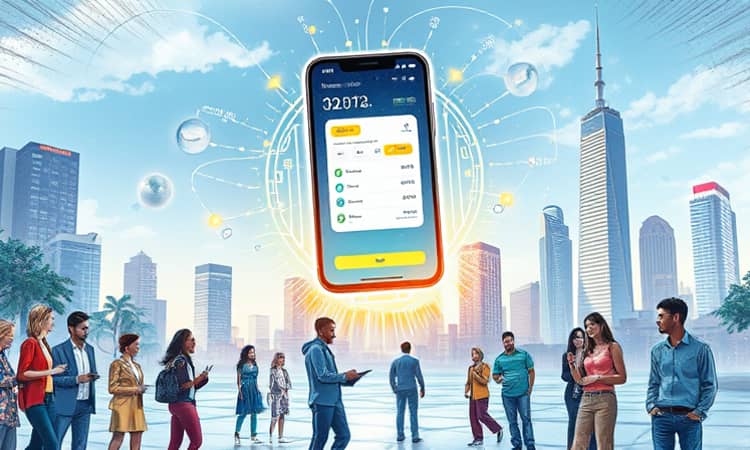The banking world is experiencing a seismic shift as online-only banks redefine the way consumers manage their finances. These digital-first institutions operate without physical branches, relying entirely on mobile apps and web platforms to deliver services. As a result, they can offer innovative features, competitive rates, and seamless user experiences that traditional banks struggle to match. In this article, we explore the factors driving the meteoric rise of online-only banks, examine global adoption trends, and discuss what the future holds for consumers and the banking industry at large.
Definition and Key Characteristics of Online-Only Banks
Online-only banks are fully digital financial institutions that eschew brick-and-mortar locations in favor of a virtual presence. Customers open accounts, deposit funds, apply for loans, and manage investments through intuitive web interfaces or dedicated mobile apps. This model eliminates the need for customers to visit physical branches while enabling banks to operate with significantly lower overhead costs. Innovations like mobile check deposit, automated savings tools, and instant transaction alerts are standard offerings in digital banking portfolios.
Unlike traditional banks, online-only banks typically focus on specific products—such as high-yield savings accounts, fee-free checking, or personalized lending—and optimize every feature for digital delivery. This specialization has fostered an ecosystem of more than 235 licensed digital banks worldwide, each striving to win market share through customer-centric design and technological agility.
Market Growth and Adoption Trends
The digital banking sector is on a remarkable growth trajectory. In 2025, digital banks are projected to generate a net interest income of $1.61 trillion globally, a figure expected to swell to $2.09 trillion by 2029 (CAGR: 6.8%). The broader digital banking market value stands at $131.9 billion, with forecasts placing it at $360.7 billion by 2037 (CAGR: 10.8%). Investment in digital banking platforms alone reached $11.56 billion in 2025 and is poised to climb to $22.3 billion by 2030 (CAGR: 14.04%).
By 2025, over 3.6 billion people worldwide will use online banking services, including 216.8 million users in the United States alone. Mobile banking penetration continues to rise, with 91% of Americans indicating that easy mobile access is a key factor in choosing a bank. Among generations, 80% of millennials, 72% of Generation Z, and 60% of Generation X favor digital banking, signaling that younger customers are driving the shift toward fully digital services.
Key Drivers of Growth
- Unprecedented level of convenience and accessibility: Customers can manage accounts, transfer funds, and apply for loans anytime, anywhere, without visiting a branch.
- Streamlined operations and fewer overhead costs: Without physical locations, online-only banks pass savings to customers through lower fees and higher interest rates on deposits.
- AI-powered budgeting and personalized advice: Advanced algorithms analyze spending patterns to offer tailored financial insights and automate savings goals.
- Significant jump in digital adoption since COVID-19 pandemic: The global health crisis accelerated the use of online banking by more than 54%, pushing reluctant users to embrace digital channels.
Investment in fintech innovation remains robust, with more than $35 billion poured into research and development in 2023. This funding fuels enhancements in cybersecurity, remote identity verification, and cloud-native banking solutions, all of which strengthen the digital banking proposition against traditional institutions.
Consumer Satisfaction and Ongoing Concerns
Digital banking satisfaction rates are strikingly high: 96% of Americans report being pleased with their online and mobile banking experiences. Users appreciate real-time alerts, simple fund transfers, and intuitive interfaces, allowing them to easily manage their finances on-the-go. Customers also value embedded financial tools, such as automated savings and instant spending analysis, which help them meet budgeting goals effortlessly.
- Security and privacy concerns: 42% of non-users cite cybersecurity as a major barrier.
- Desire for in-person services: 45% still prefer branches for cash deposits and complex transactions.
- Technology adoption gaps: Older generations may lack digital literacy or face accessibility challenges.
Addressing these concerns is critical. Digital banks are investing heavily in multi-factor authentication, biometric logins, and fraud detection systems to build trust. Some also partner with physical network providers to offer limited branch or ATM access, bridging the gap between digital convenience and tangible service points.
Regional and Global Perspectives
Online banking penetration varies across regions but trends upward everywhere. In North America, 81% of the population uses online banking, while Western Europe reports rates above 70%. In Asia-Pacific, particularly China, over 80% of internet users engage with digital banks. These regional differences are tied to smartphone and internet adoption rates, regulatory environments, and cultural openness to digital solutions.
Emerging markets present exciting opportunities for digital banks to drive financial inclusion. With smartphone penetration climbing and traditional banking infrastructure lagging, online-only banks can offer approachable, low-cost financial services to underserved communities, potentially bringing millions into the formal financial system for the first time.
Regulatory and Industry Trends Shaping the Future
Regulators worldwide are responding to digital banking’s rapid growth by updating frameworks to ensure stability and consumer protection. Open banking initiatives, which mandate data sharing between financial institutions, foster competition and drive further innovation. Meanwhile, central banks are exploring Central Bank Digital Currencies (CBDCs), which could integrate seamlessly with digital banking platforms and reshape monetary policy execution.
Increased partnerships between traditional banks, fintech startups, and tech giants are blurring industry boundaries. This collaborative environment encourages continuous improvement, enabling customers to benefit from a wider range of services—everything from micro-investing and insurance products to peer-to-peer payments—within a single digital ecosystem.
Future Outlook and What It Means for Consumers
As technology advances, we can expect even more personalized banking experiences. Artificial intelligence, data analytics, and cloud-native architectures will empower banks to anticipate customer needs, offer custom financial solutions, and ensure top-tier security. Digital banks will also prioritize sustainability, leveraging eco-friendly investments and green finance products to align with growing consumer demand for responsible banking.
For consumers, the rise of online-only banks translates into greater choice, better rates, and a more engaging banking experience. Whether you seek high-yield savings, fee-free checking, or innovative lending options, digital-first institutions offer compelling alternatives to legacy banks. By comparing features, fees, and security measures, customers can select a digital bank that aligns with their financial goals and lifestyle preferences.
The era of online-only banking is here to stay. Armed with powerful digital tools and a commitment to customer-centric design, these banks are not merely a trend—they represent the future of finance.














